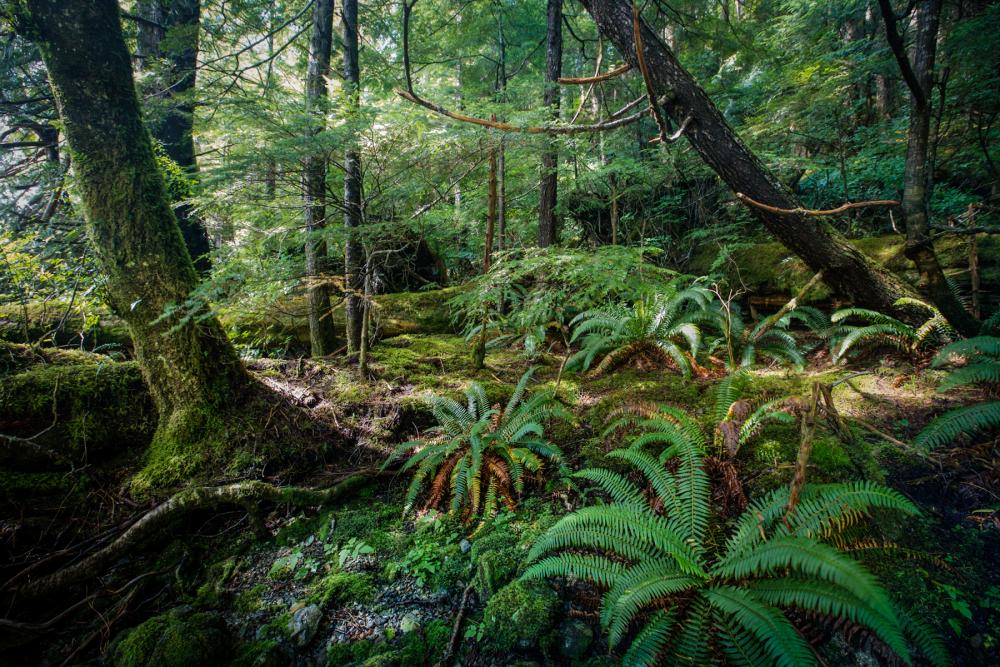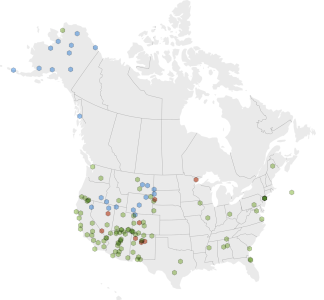3 iconic Alaska landscapes under threat

Members of the Porcupine Caribou Herd enter the mountain valleys in the Arctic Refuge, where they find lush vegetation.
Florian Schulz
The Trump administration has laid the groundwork for opening more public lands in Alaska to drilling and mining
As you’ve likely heard for months (years, really), President Trump wants to “drill, baby, drill” on public lands— and Alaska is at the heart of this attack. Through an executive order titled “Unleashing Alaska’s Tremendous Resource Potential” and a follow-up secretarial order, his administration is aggressively targeting Alaska’s wildlands for drilling, mining and development like no other state.
These orders direct the Department of the Interior (DOI) and Department of Agriculture to dismantle protections for some of Alaska’s most iconic and special landscapes. The DOI has already begun taking the first steps to advance this energy dominance agenda. These efforts attempt to erase our efforts to protect Alaska’s public lands, waters and wildlife and the local communities they serve.
The most at-risk places are:

Some of Alaska’s most iconic and special landscapes facing threats.
Phil Hartger
1. Arctic National Wildlife Refuge
The Arctic National Wildlife Refuge, spanning 19.3 million acres, is the largest wildlife refuge in the United States and is home to an incredible array of species, including caribou, polar bears, musk oxen and hundreds of migratory birds. The Porcupine Caribou Herd depends on the refuge’s coastal plain as its calving grounds. The place is also sacred to the Indigenous Gwich’in people, who have relied on the herd for sustenance for thousands of years.
Sadly, despite its ecological and cultural significance, the Trump administration has long targeted the Arctic Refuge for oil and gas development. The 2017 Tax Cuts and Jobs Act opened the entire 1.56-million-acre area of the coastal plain to leasing, but subsequent lease sales failed, with the most recent one attracting no bids. Now, the Trump administration is seeking to weaken environmental safeguards and fast-track drilling. These renewed efforts threaten critical wildlife habitats and the homelands of Indigenous communities who have deep connections to this land.

Caribou moving across snowy and frozen water in the Arctic National Wildlife Refuge.
Peter Mather
2. Western Arctic
The Western Arctic (known as the National Petroleum Reserve-Alaska) is the nation’s largest tract of public land at 23 million acres (nearly the size of Indiana). This vast landscape provides essential habitat for millions of migratory birds, tens of thousands of caribou and iconic Arctic species such as wolves, musk oxen, grizzly bears and even polar bears. This landscape includes more than 13 million acres of federally protected lands known as “Special Areas,” and plays an important role for subsistence hunting and gathering for North Slope communities.
The Trump administration is trying to undo our progress by reopening up to 82 percent of this landscape for oil and gas leasing through an executive order directing DOI to roll back safeguards and eliminate Special Area protections—putting critical wildlife habitat and Indigenous subsistence lands at risk.

Hiker overlooking Utukok River in the Western Arctic.
Kim Mincer, BLM
3. Tongass National Forest
The Tongass spans nearly 17 million acres in Southeast Alaska and is the largest national forest in the United States as well as one of the world’s last intact temperate rainforests. It holds the nation’s largest tracts of old-growth forest, providing critical carbon storage, sustaining Indigenous cultures and supporting diverse wildlife. In 2023, we successfully reinstated the Roadless Rule, protecting 9.3 million acres of untouched forest from logging and road-building.
Unfortunately, the Trump administration is trying to remove the “roadless” forest protections, opening vast swaths of the Tongass to logging. This move would reverse hard-won conservation progress and threatens not only ancient forests but also the livelihoods and traditions of the Tlingit, Haida and Tsimshian peoples. Protecting the Tongass isn’t just about saving trees—it’s about defending a way of life, preserving wildlife and safeguarding our climate.

Tongass National Forest, one of the world’s last intact temperate rainforests.
Nelson Guda
Other Alaska wildlands and protections at risk:
Recent executive actions also threaten other special landscapes and science-based conservation efforts in Alaska:
- The Trump administration is looking to approve a proposed industrial road, the Ambler Road, cutting through the Brooks Range and Gates of the Arctic National Park and Preserve to open a remote mining district in the heart of the Arctic.
- It is also pushing to approve a road project slicing through the Izembek National Wildlife Refuge—one of the most ecologically significant wetlands in North America, jeopardizing a crucial stopover for migratory birds.
- The administration is also rolling back tribally-led conservation protections in the Central Yukon and revoking safeguards for 28 million acres under the Alaska Native Claims Settlement Act.
Stay tuned to take action!
The Wilderness Society has been defending Alaska’s wildlands for decades, and we’re not stopping now. We’re ready to challenge these attacks, mobilize support and take action—but we need your help.
-
Stay informed
Follow us on social media for updates.
-
Take action
Sign up for our emails so you’ll know when it’s time to speak up.
-
Spread the word
Share this with friends and family who care about Alaska.



